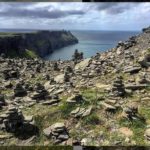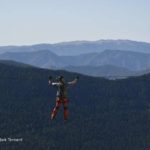In the mountains, away from the ?domaine skiable?? (the ski areas), rescue is provided, free of charge, by the French state.
The principle mountain rescue services are provided by:
- The Gendarmerie (and specifically the PGHM – Peloton Gendarmerie de Haute Montagne);
- The CRS Montagne – Les Compagnies r?publicaines de s?curit?.
- The ?Sapeurs-Pompiers? (and specifically GRIMP).
However, in some areas, notably the Tarentaise (Savoie), private organisations also form part of the departmental rescue plan. Here, SAF Helicopters has a contract with 43 communes and is a partner of the many ski resorts.
Sadly, the ?free of charge? principle has been eroded. In 1985 charging was instigated for skiers in the ski resorts and this has crept into wider circulation from 2002 although this can depend on the commune. A subsequent law in 2004 attempted to restablish the ?free of charge? principle but for whatever reason the 2002 law has not been repealed! The argument that rescue should remain free of charge is that citizens have already paid for the services of the state through their taxes.
Whilst the [mountain] rescue itself may be free the intervention of the doctor is not. The doctor’s fees may not be covered completely by the French health service or Securite Sociale. These fees may be substantial.
Consequently it is best to play safe and make sure you have suitable insurance that covers you for the activities you intend to undertake including rescue, medical and, if necessary, repatriation. If your activities take place across the frontier in Switzerland you should note mountain rescue is always charged for and is very expensive!
Calling for Mountain Rescue
The key number is 112, the European emergency number. The centre will then put you through to the relevant emergency service.
Calling for Mountain Rescue in Switzerland
The primary number in Switzerland is 1414 or 144 (if you happen to be in the Canton of Valais) – this puts you through to the REGA.?? If all else fails dial 112.
Calling for Mountain Rescue in Italy
Before You Call
You should be ready to reply to the following questions (if you don’t you will spend more time on the phone):
- Who are you?
- What’s your telephone number?
- Where are you? You should be able to give the co-ordinates for your location. What path are you on? e.g. the Tour du Mont Blanc between X and Y.?Useful applications
- What altitude you are at?
- What’s happened? e.g. Fall or slip, illness, etc.
- How many of you are there?
- What injuries / illnesses? e.g. casualty unconscious ? not responding to pain? fractures (which limb, etc).
- What’s the weather like at your location? e.g. visibility ? distance; obstacles e.g. power lines or ski lifts ( a major factor for a helicopter), cloud base, wind speed.
After Raising the Alert
- Don’t hang up until told to do so.
- Leave your phone on for a potential call back.
- Follow the instructions of the rescue services.
Preparing for the Arrival of a Rescue Helicopter
- Landing site minimum 25m x 25m (free of obstacles)
- Landing site c. 100m from the site of the accident
- Remove loose objects (e.g. clothes, rucksacks, etc) or lie on top of them.
- During landing ? stay still and kneeling down.
- Keep visual contact with the pilot.
- Don’t approach the helicopter except guided by a rescuer.
Insurance
Below is a far from exhaustive list of options for suitable insurance.
Club Alpin Francais ? becoming a member of the CAF gives access to very good insurance.
Diot Montagne ? this company offers insurance by the day, week or annually.
Au Vieux Campeur – this chain of outdoor shops offers a very competitive insurance with their “Carte Club”.
Don’t forget that certain home insurance policies may also give cover, as do certain credit cards. As always read the fine print to avoid a nasty shock!
?
Useful Applications:
- UTM GPS – gives UTM grid reference in large letters along with your altitude.
- GendLoc – an application used by the gendarmerie to locate your position.? They send you a text message and if you click on the link it gives them your precise location.? It needs you to have a signal and data connection.
- ViewRanger – you can read my review of this GPS mapping application here.
Footnotes
?The ski area (?domaine skiable?) is said to cover the area that can be reached by gravity from a ski lift.
References
L’article 54 de la loi n? 2002-276 du 27 f?vrier 2002
Un texte de 2004, l?article 27 de la loi de modernisation de la s?curit? civile SDIS.


